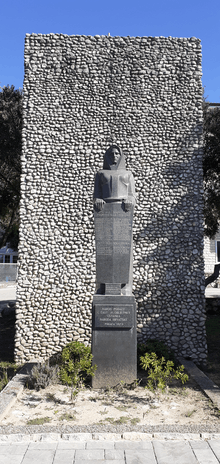Podaca
Podaca is a tourist locality in southern Dalmatia, Croatia, located on the coastline between bigger cities of Split and Dubrovnik, or more closely smaller cities of Makarska and Ploče, in the Gradac municipality, across from peninsula Pelješac and famous island of Hvar (Pharos).


Podaca as a part of the Makarska littoral is completely oriented towards tourism (with minimum and limited agriculture around olives). There were about 660 inhabitants (data from 2009) living at Podaca mainly engaged in tourism. The locality has available about 1100 beds in private rooms and suits, with ca. 183 accommodation units in the tourist village/resort Morenia[1] (renovated, extended and up-scaled in 2017-218) and about 600 accommodation units at the camping site "Uvala borova" (The pine bay). Beautiful beaches in the peacefulness of the pinewood and the gastronomic offer of Dalmatian folk – cuisine as well as the vicinity of attractive daytrip destinations make Podaca a very desirable place for summer vacation. Unfortunately most of the facilities get closed and activities reduced as early as October and only re-activate in May or even only from start of June.
Contemporary updates
As of 90s there has been a trend of older population from neighboring regions (mostly Bosnia & Herzegovina) retiring to live in this area, hence extending the use of summer vacation houses. However not much has changed in terms of addressing this directly.
After many years of decay (since war in early 90s) first significant infrastructural development was done in 2017-2019, that includes fixing pathways and building playground for kids and open air sport courts, as a signs of better governance with first change of political climate. Medical emergency service has been established also in the former building of supermarket "Razvitak" to serve near by villages and towns. Also establishing of innovative mini cultural outpost in the form of "beach library" [2] became a good sign of innovative potential. Through European Union subsidy most basic WiFi infrastructure was put in place in the center of Podaca and Viskovića Vala beach area (as in neighboring villages/towns also).
However due to opening of A1 highway of Croatia from Zagreb to Ploče and change of the bus-business operations (Flixbus marketing company taking over regulation of some of the bus lines), most of smaller towns and villages became significantly less accessible by public transport. Buses are the only option and no longer as frequent in daytime or none in the evenings (late in the day Gradac municipality is not accessible from Split and in the evenings from Makarska and Ploče also).
History

Podaca is a village located on the southern part of Makarska Riviera, beneath Biokovo, 35 km away from Makarska. It is made up of three neighbourhoods: Kapeć (bordering Zaostrog), Viskovića vala and Ravanje (bordering Brist).
Podaca was founded on the rocky slopes of Biokovo, on a defensible location, and there are traces of human habitation since Stone Age, like a stone mallet for mixing grain, which is kept in a Franciscan monastery at Zaostrog. Many stone ruins beneath Biokovo bear witness to the period of Illyrian habitation (2000 years BC - 1st century).
During the Roman rule this area was administrated from Narona. There are many artifacts from that period like a broken jar with a silver coin with a Roman emperor Sever (193-211AD), which were found here. Other remains from the Roman age include a part of the walls, near which a Christian tone tablet was found, dated from the Middle Ages. During the Large migrations Croats inhabited these parts (7th - 8th century). They founded their settlements high on the hilltops, in order to have a more defensible position and to make use of mountain pastures.
The Middle Ages were marked with a constant struggle between Croats and Venetians. Croats were at the peak of their naval might during the dominance of Kacic dynasty, with their decline (1280) Croatian naval dominance also declined. One of the remains from that period (11th-12th century) is an old Croatian church of St. Ivan with tombs of Kacic family at Gornja Podaca, which were Kacic ancestral lands. The church of St. Ivan at the Podaca cemetery was built in pre-Romanesque period in the 11th and 12th centuries. Not far from the church of St. Ivan, built in 1492, stood the church of St. Stjepan, which was razed to the ground in the 18th century to make room for a present-day church built in 1762. After an earthquake in 1962, almost the entire population migrated to the coastal area where a new church was built to Our Lady of Annunciation. Near the church there lies a cemetery with ancient tombstones.
During the World War 2 many of the people of Podaca were killed fighting Fascism or as victim of the regime. Sculptor Luka Musulin (student of famous Antun Augustinčić) made and gave as a present to his birthplace [3] an impressive larger than life size sculpture in dark granite of Dalmatian mother holding a list with their names.
